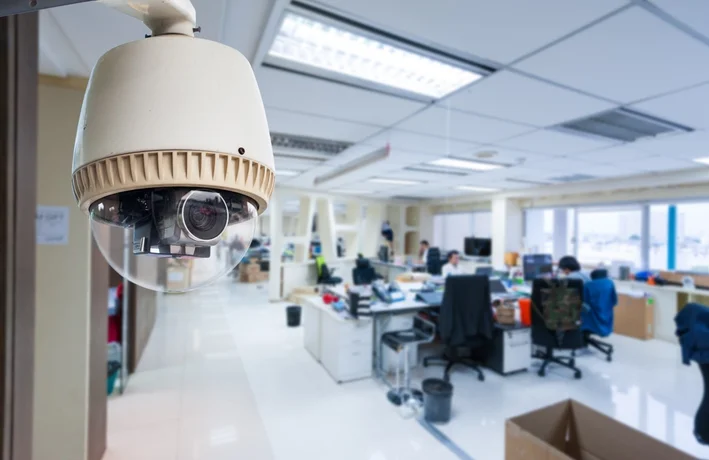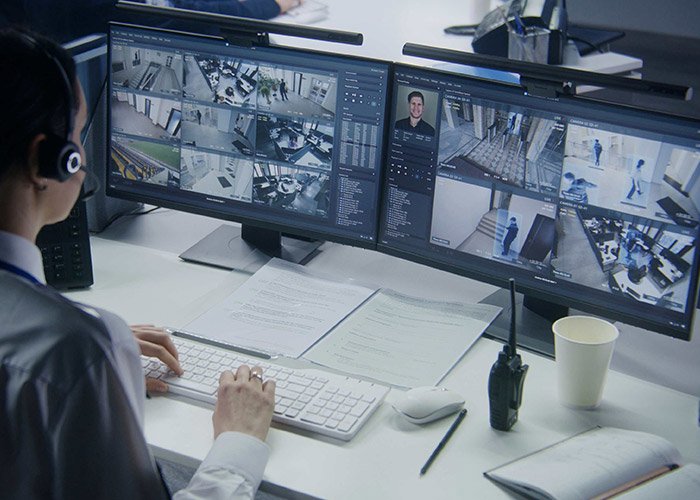Navigating Employee Surveillance: What Employers Can and Can’t Do in the Digital Age

In the digital age, the use of employee surveillance has become increasingly prevalent. From tracking computer usage to monitoring GPS locations, businesses have access to a vast array of tools to oversee employee activities. While these technologies can enhance productivity, ensure security, and protect company assets, they also raise critical privacy concerns. As such, employers must carefully navigate the legal and ethical boundaries of employee surveillance to avoid potential violations of privacy rights and labor laws.
The Rise of Employee Surveillance
Employee surveillance is not a new phenomenon. For decades, businesses have used cameras, time clocks, and other tools to monitor employees. However, the proliferation of digital technologies has significantly expanded the scope of what employers can monitor. According to a 2024 survey by Statista, 56% of U.S. companies now employ some form of employee monitoring, a number that has risen in response to the growth of remote work. Tools like keystroke tracking software, email monitoring, GPS location tracking, and video surveillance are now widely used to monitor employees’ work performance, safety, and security.
While these tools can help businesses ensure efficiency and protect valuable assets, they also raise complex legal questions about employee privacy and workplace rights.
What Employers Can Do: Legal Guidelines and Best Practices
Employers are allowed to monitor certain aspects of their employees’ activities, particularly when it comes to work-related duties. However, surveillance practices must be in compliance with both federal and state privacy laws. Below are some areas where employers have the legal right to monitor:

1. Workplace Computers and Devices
Employers generally have the right to monitor employees’ use of company-issued devices, including computers, email systems, and mobile phones. This is especially true if the equipment is provided for business purposes. In the case of City of Ontario v. Quon (2010), the U.S. Supreme Court ruled that employers could access employee text messages on work-issued devices, as long as the monitoring is reasonable and related to business needs. The Court emphasized that employers need to establish clear policies regarding personal use and monitoring of company equipment.
Best Practice: Employers should create and communicate clear, written policies that inform employees about their rights and obligations concerning the use of company devices. Transparency about monitoring practices reduces the likelihood of legal disputes.
2. Video Surveillance in the Workplace
Employers can legally install video surveillance cameras in common areas such as offices, hallways, and parking lots to monitor employees for security or safety purposes. However, cameras should not be placed in areas where employees have a reasonable expectation of privacy, such as restrooms, changing rooms, or break areas.
Best Practice: Employers should notify employees of the existence of surveillance cameras and the purpose for which they are being used. In general, video surveillance should be limited to areas where security or operational needs justify it.
3. GPS Tracking of Company Vehicles
Employers can use GPS tracking systems to monitor employees who drive company vehicles. This is particularly common in industries like delivery services, transportation, and fieldwork. GPS tracking allows businesses to monitor the efficiency and safety of employees while they are on the job.
In the U.S. v. Jones (2012) case, the Supreme Court held that long-term GPS tracking of a vehicle requires a warrant, but this ruling primarily applies to law enforcement, not private employers. Private companies have more leeway in tracking vehicles used for business purposes, as long as employees are informed about the monitoring.
Best Practice: GPS tracking should only be used during work hours and for work-related purposes. Employers should clearly communicate to employees when and why GPS tracking is in place and avoid tracking employees outside of business hours unless there is a legitimate business need.
4. Social Media Monitoring
Employers have the right to monitor employees’ public social media profiles to ensure compliance with company policies and protect the company’s reputation. For instance, employers can monitor social media posts to prevent the sharing of confidential information, inappropriate behavior, or harassment. However, employers cannot access private social media accounts without consent.
In the case of NLRB v. Pier Sixty (2012), the National Labor Relations Board (NLRB) ruled that a company unlawfully fired an employee for making critical comments about her supervisor on Facebook, asserting that such behavior was protected under the National Labor Relations Act (NLRA) if it was related to workplace conditions or labor disputes. This case underscores the importance of protecting employees’ rights to free speech in certain contexts.
Best Practice: Employers should create clear guidelines about what constitutes acceptable social media conduct and inform employees about the potential consequences of violating these guidelines. Monitoring should focus on public posts only and avoid infringing on personal privacy.
What Employers Can’t Do: Legal Limitations
While employers have broad authority to monitor employees in some areas, there are also important legal limitations designed to protect privacy and prevent overreach. Below are key restrictions that employers must observe:
1. Monitoring Personal Devices and Communications
Employers cannot monitor employees’ personal communications or devices without their consent. This includes personal emails, text messages, and phone calls. Federal law, including the Electronic Communications Privacy Act (ECPA), provides protections against the interception of personal communications, even if the employee is using a work device.
In United States v. Patterson (2009), a federal court ruled that monitoring an employee’s personal email without consent violated the employee’s Fourth Amendment rights. Employers must obtain explicit consent from employees before monitoring personal communications, and surveillance must be limited to work-related activities.
Best Practice: Employers should clearly distinguish between personal and professional use of company devices and avoid monitoring personal communications unless there is a clear, valid reason to do so.
2. Overly Invasive Computer Monitoring
While employers can monitor work-related computer activities, excessively invasive monitoring, such as tracking every keystroke or logging every website visited, could be deemed an invasion of privacy. Courts have ruled that such practices may violate employees’ reasonable expectations of privacy, particularly if monitoring is unrelated to job performance or business interests.
In the In re: Dell, Inc. (2007) case, the court ruled that an employer’s extensive monitoring of employees’ internet usage—without adequate disclosure—was excessive and violated privacy laws. This decision highlights the need for balance between monitoring for productivity and respecting privacy.
Best Practice: Employers should limit monitoring to activities that are directly related to business needs. Policies should be clear about what constitutes acceptable use of company devices, and employees should be notified if and when monitoring takes place.
3. Covert Surveillance
Surveilling employees without their knowledge can lead to serious legal consequences, especially if the monitoring is deemed to be excessive or unnecessary. Covert surveillance is particularly problematic if it violates employee rights or is used in a discriminatory manner.
In Barrett v. Atlantic Richfield (2001), the court held that secret video surveillance of an employee could be a violation of privacy if it was done without a legitimate reason and without informing the employee.
Best Practice: Employers should be transparent about their surveillance practices and avoid covert monitoring unless it is absolutely necessary to protect company assets or prevent misconduct.
Conclusion: Striking the Balance
In the digital age, employee surveillance presents both opportunities and risks. While employers have the right to monitor certain activities to ensure productivity, security, and compliance, they must balance these interests with respect for employee privacy. Clear communication, transparent policies, and a commitment to fairness are essential to navigating the complex landscape of employee surveillance.
By following legal guidelines, respecting employee privacy rights, and implementing best practices, employers can create a workplace where both business interests and employee rights are protected. As surveillance technologies continue to evolve, employers must remain vigilant and adapt to new legal standards to ensure that their monitoring practices remain compliant and ethical.



